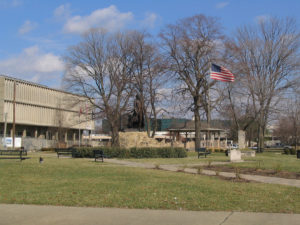We like to keep up with the most current education of trees. We read and understand how they grow, where they grow, the dislts and diseases that art asssociated with them and so on. We do this so we can help our customers to make decisions based on this knoweledge. If we need to remove a tree based on its location or disease that it may have it is important the we, as a tree service company in Terre Haute, continues to advance with this notion. We came accross the below text from the book The Woodlot Management Handbook Authored by Stewart Hilts and Peter Mitchell. We thought it was interesting even though you really don’t have to be worried about altitude in Terre Haute.
“Altitude is another topographic influence. This is most noticeable in
mountainous regions. Average temperature falls as you go
upwards in altitude, until you reach ice and snow if the mountain
are high enough. This changing temperature results in different
vegetation communities at different altitudes.
MANAGEMENT IMPLICATIONS: The species of vegetation
growing in your woodlot, as well as your options for tim-
ber harvesting or trail building, may be limited by topo-
graphic location and slope.”
Another part of the same book that we came accross that we found to be of value was that below the author talks about the fact that in old forests there are pits and mounds from old rotted roots. We thought this was interesting because we have seen some of the same pits and mounds in customers yards from old tree roots that have decayed.
“Within a woodlot there may be small variations in topography:
steep slopes, depressions that form wetlands, and drier upland
areas. One of the most interesting is the “micro-topography” of
pits and mounds.
When large trees are uprooted in a woodland, a massed tangle
of roots is thrust into the air, bringing with it organic debris and
mineral soil. Below, the mineral soil is often exposed in the hollow
left by the uprooted tree. Over time, the roots will rot and subside
as they are covered with fallen leaves and organic matter, gradually
forming a mound. At the same time, the hole left by the roots will
gradually modify into a smoother depression or pit. This is the
pits-and-mounds topography of an undisturbed old forest.
Along with pits and mounds are a variety of biological life. The
Louisiana waterthrush, a rare woodland-dwelling bird, depends on
root tangles for nesting sites, especially if the wet pits fill with water.
On the other hand, the exposed mineral soil in the pits often
provides a drier soil in which oaks, white pine, and basswood ca Can
germinate. Salamanders, one of the largest but often unseen bio
logical components of many woodlands, live beneath and event.
ally within the fallen log. Invertebrates, bacteria, and fungi con.
tribute to the process of decay.
Together, these micro-topography variations add immensely s to
the biological diversity of a woodland.”
It is interesting that even the animals can benefit greatly from the root and tree decay process. Everytime we remove a tree and the customer wants us to take the roots we are more than happy to ground down to roots and smooth the dirt over so when we leave their isn’t a hole to fall into. Thanks for reading another article from Tree Service Jeffersonville.
